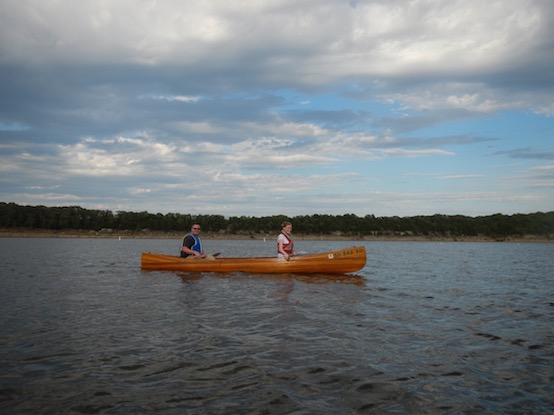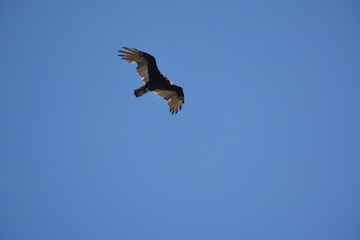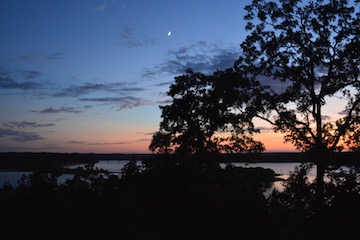Traveling with boats
18/09/15 00:50

One thing about having wooden boats is that people will talk to you about them. I am constantly having conversations with strangers that begin with, “Are those boats wooden?’ followed by, “Did you make them yourself?” Most of the time I’ll get a compliment, “Pretty boat.” The boats are pretty. And I do like talking about my hobby.
Sometimes the boats will give rise to other forms of conversation. Yesterday, a local fishermen heading out into Harry Truman Reservoir for catfish asked, “You hall those boats all the way down here just to put them in the reservoir?” It doesn’t work exactly like that, but yes, I did hall them all this way to paddle here. The truth is that I came to Missouri to see our daughter and son in law and that I take boats with me wherever I go and that I like to paddle in new places. My boats get more miles on the rack on the pickup than they will ever get in the water. They are easy to load and haul. It isn’t like one of the fancy bass boats that we see down here. My boats travel for free. Of course I’m aware that they do create some windage and affect the gas mileage of the truck a little bit, but that is a price I’m willing to pay to have a boat available when I come upon a bit of water.
One of the boats that I have with me on this trip has been in the Atlantic Ocean, the Bay of Fundy, Lake Superior, Lake Michigan, Lake Huron, the Missouri River, Fort Peck Lake, Lake Sakakawea, Lake Oahe, Lake Francis Case, Shadehill Reservoir, Sheridan Lake, Pactola Lake, Deerfield Reservoir, Angostura Reservoir, Horse Thief Lake, Legion Lake, Sylvan Lake, Bismarck Lake, Center Lake, Stockade Lake, the Yellowstone River, Lake Coeur d’Alene, the Snake River, the Salmon River, the Puget Sound, the Pacific Ocean, and dozens of other small lakes and rivers over the years. It has been to both the east and west coasts of the U.S.A. and of Canada. My boats have been inspected for invasive species on multiple occasions and I have been educated in the proper procedures for scrubbing and drying my boats so that I don’t transport invasive species from lake to lake.
I like to paddle. I like to have a boat along with me when I go exploring a place. I enjoy putting my boats into the water.
So the answer to whether or not I came all the way to Missouri just to paddle my boats hinges in the word “just.” I didn’t come all the way here just to paddle, but I enjoy paddling now that I have come here.

This trip is our second visit to Truman reservoir. On our previous visit, we had a different camper and we were also hauling a row boat that I made, which was fun for exploring the edges of the reservoir. This trip afforded me the opportunity to try out a new kayak sailing rig. I discovered that it will also pull a canoe at a reasonable pace. It works mostly for sailing downwind and I have a lot yet to learn about sailing, but exploring with the boat was a fun adventure in the light winds of last evening. When the weather gets rough, as I am sure it does around here, it is time for me to pull my boats off of the water.
That is another nice feature about small boats. I can choose when to put them into the water and when to stay on dry land.
It has been a good trip for exploring some of the rural areas of Missouri. Along state route 7, not far from where we are camped, is a little town named Tightwad, Missouri. It isn’t the kind of name one is likely to forget. The local story is that a store owner cheated a customer, who was a postman, by charging him an extra 50 cents for a watermelon. There is also a version of the story that involves the sale of a chicken. It isn’t a large town, but it has a cafe, a bar and a convenience store. There are numerous storage facilities for campers and boats that are used on Truman Reservoir. There once was a bank in the town, but the sign had been covered up by the time of our visit yesterday. I thought it would be good to have a picture of the Tightwad Bank, but that will have to wait for another time.

I’m sure we’d find topics of conversation with people wherever we traveled even if we didn’t have wooden boats atop our truck, but the boats provide a good conversation starter and open the door for us to learn about the interesting people and places that we have been privileged to visit.